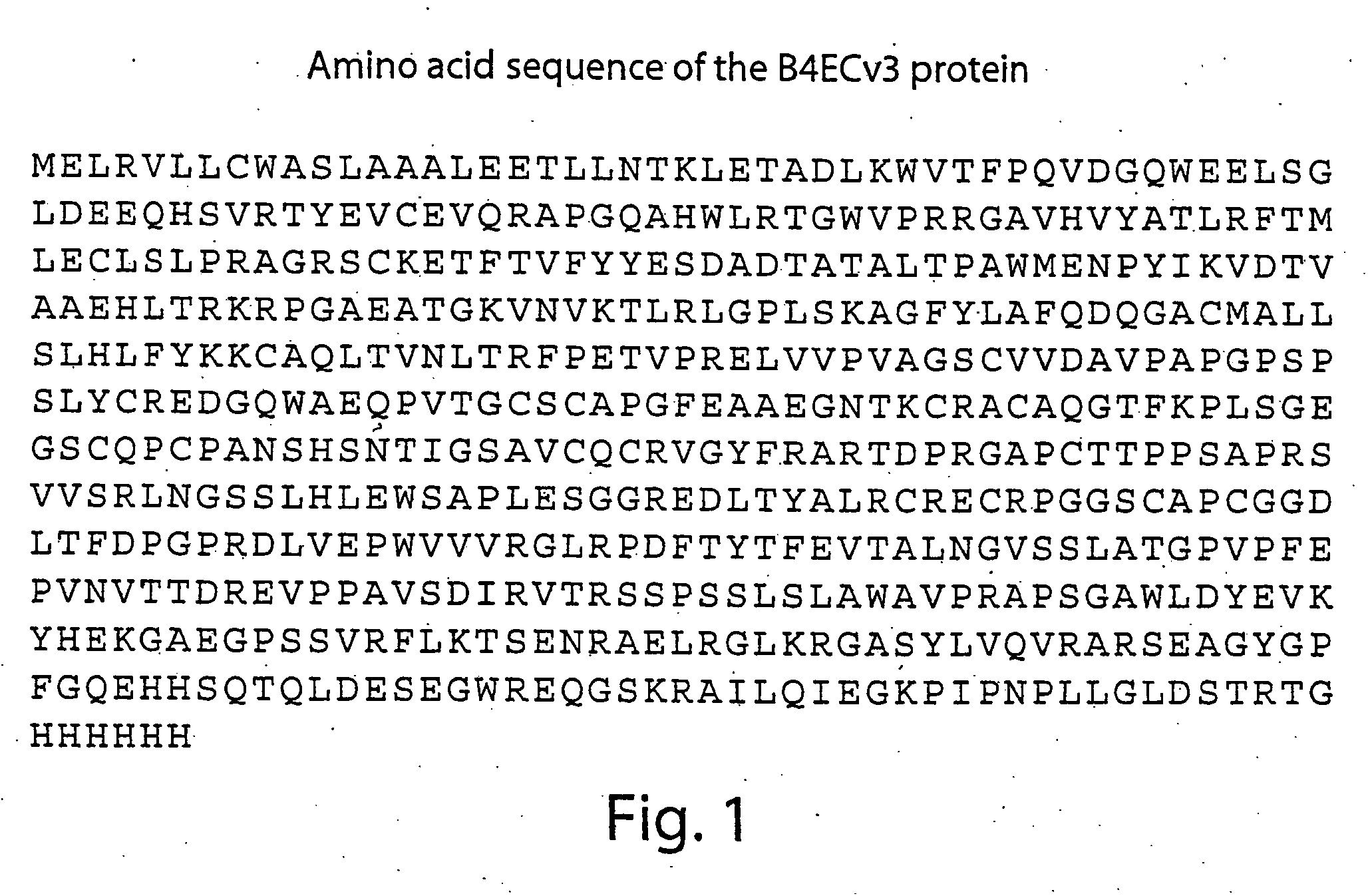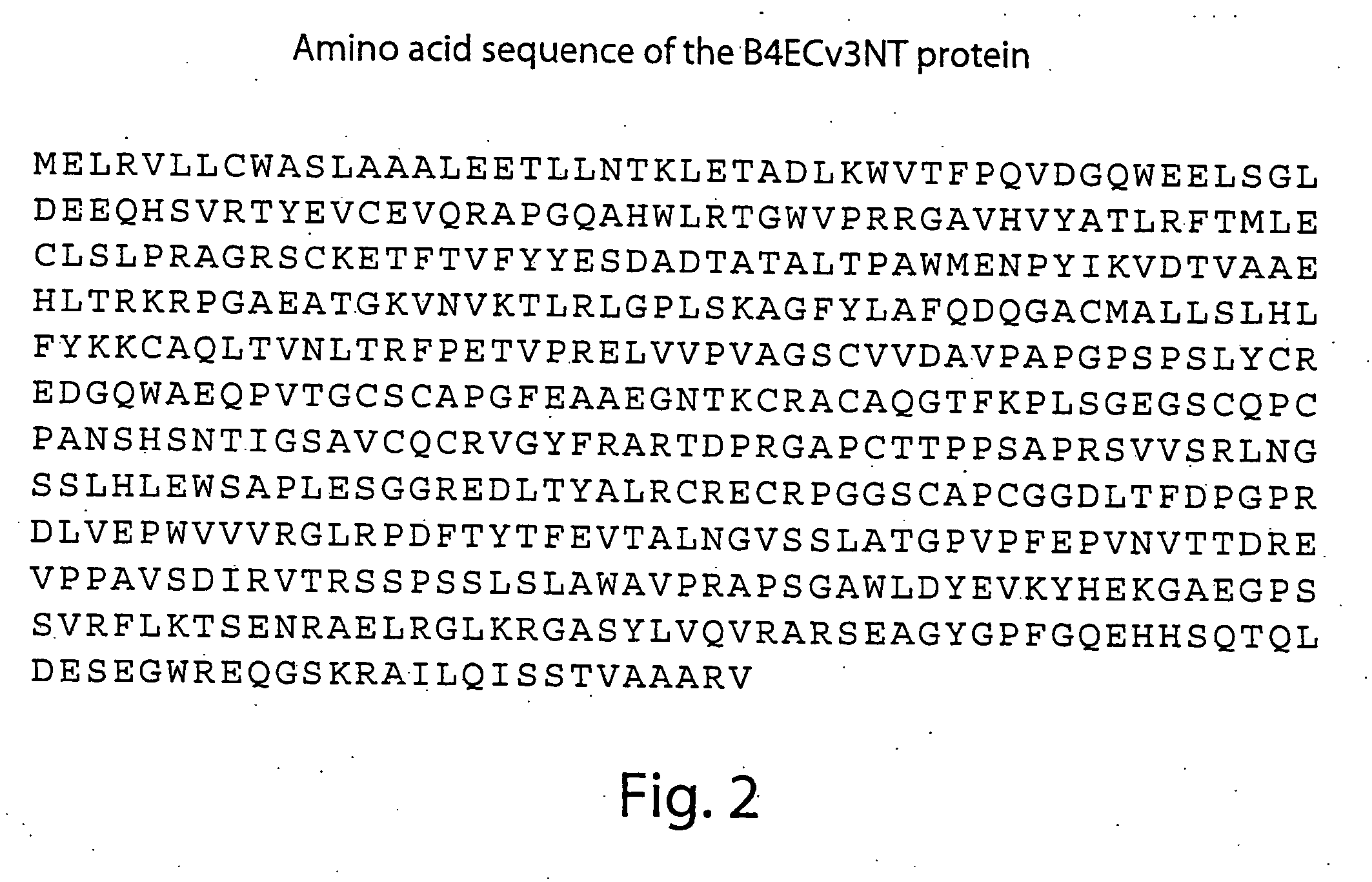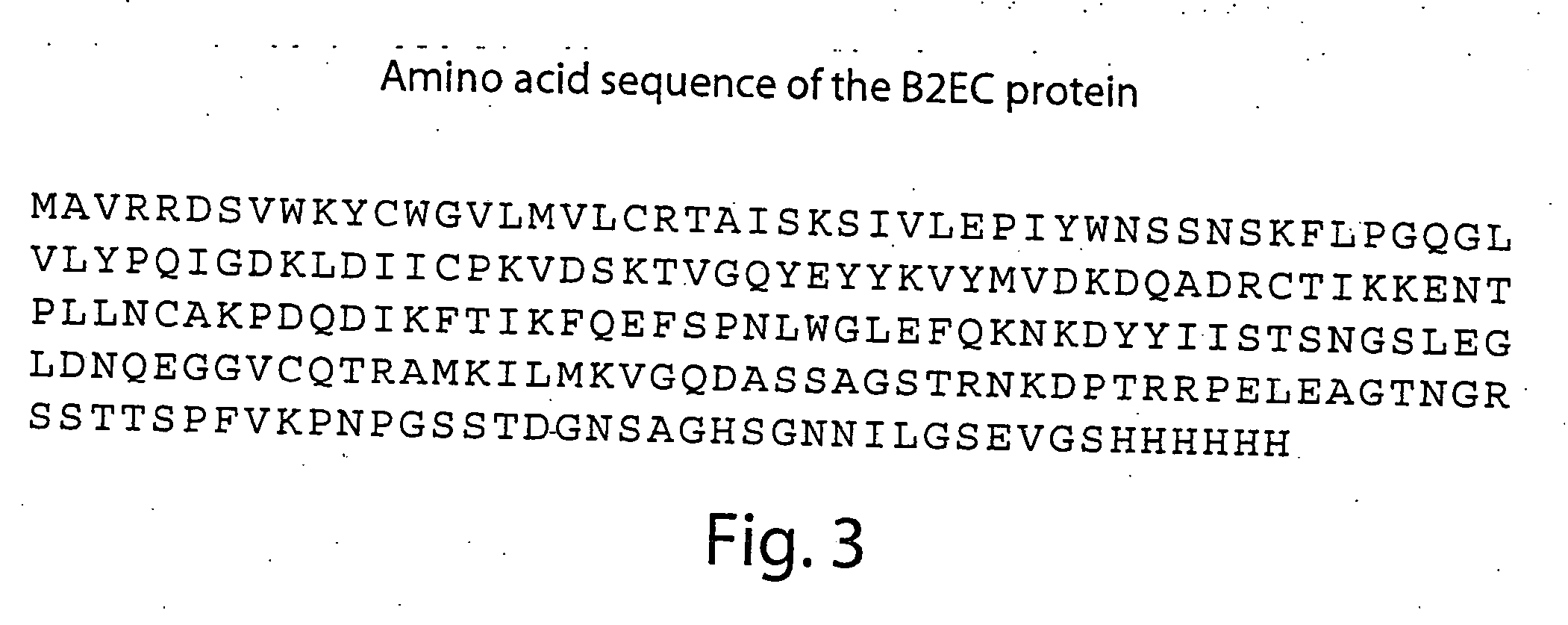Compositions and methods for detecting and treating tumors
a technology for tumors and compositions, applied in the field of compositions and methods for detecting tumors, can solve the problems of cancer being a significant cause of mortality, and achieve the effects of reducing lowering the expression of ephb4, and increasing the indicator of ephb4 activity
- Summary
- Abstract
- Description
- Claims
- Application Information
AI Technical Summary
Benefits of technology
Problems solved by technology
Method used
Image
Examples
example 1
EphB4 is Expressed in Squamous Cell Carcinoma of the Head and Neck (HNSCC)
A. HNSCC Tumors Express EphB4
[0109] We studied the expression of EphB4 in human tumor tissues by immunohistochemistry, in situ hybridization, and Western blot. Twenty prospectively collected tumor tissues following IRB approval have been evaluated with specific EphB4 monoclonal antibody that does not react with other members of the EphB and EphA family. EphB4 expression is observed in alt cases, with varying intensity of staining. FIG. 7A (top left) illustrates a representative case, showing that EphB4 is expressed in the tumor regions only, as revealed by the H&E tumor architecture (FIG. 7A bottom left). Note the absence of staining for EphB4 in the stroma. Secondly, a metastatic tumor site in the lymph node shows positive staining while the remainder of the lymph node is negative (FIG. 7A, top right).
[0110] In situ hybridization was carried out to determine the presence and location of EphB4 transcripts ...
example 2
EphB4 is Upregulated and Imparts Growth Advantage in Prostate Cancer
A. Expression of EphB4 in Prostate Cancer Cell Lines
[0113] We first examined the expression of EphB4 protein in a variety of prostate cancer cell lines by Western blot. We found that prostate cancer cell lines show marked variation in the abundance of the 120 kD EphB4. The levels were relatively high in PC3 and even higher in PC3M, a metastatic clone of PC3, while normal prostate gland derived cell lines (MLC) showed low or no expression of EphB4 (FIG. 9A). We next checked the activation status of EphB4 in PC3 cells by phosphorylation study. We found that even under normal culture conditions, EphB4 is phosphorylated though it can be further induced by its ligand, ephrin B2 (FIG. 9B).
B. Expression of EphB4 in Clinical Prostate Cancer Samples
[0114] To determine whether EphB4 is expressed in clinical prostate samples, tumor tissues and adjacent normal tissue from prostate cancer surgical specimens were examined. ...
example 3
Expression of EphB4 in Mesothelioma
A. EphB4 and EphrinB2 are Expressed in Mesothelioma Cell Lines
[0115] The expression of Ephrin B2 and EphB4 in malignant mesothelioma cell lines was determined at the RNA and protein level by a variety of methods. RT-PCR showed that all of the four cell lines express EphrinB2 and EphB4 (FIG. 11A). Protein expression was determined by Western blot in these cell lines. Specific bands for EphB4 were seen at 120 kD. In addition, Ephrin B2 was detected in all cell lines tested as a 37 kD band on Western blot (FIG. 11B). No specific band for Ephrin B2 was observed in 293 human embryonic kidney cells, which were included as a negative control.
[0116] To confirm the presence of EphB4 transcription in mesothelioma cells, in situ hybridization was carried out on NCI H28 cell lines cultured on chamber slides. Specific signal for EphB4 was detected using antisense probe Ephrin B2 transcripts were also detected in the same cell line. Sense probes for both Eph...
PUM
| Property | Measurement | Unit |
|---|---|---|
| Volume | aaaaa | aaaaa |
| Electric charge | aaaaa | aaaaa |
| Electric charge | aaaaa | aaaaa |
Abstract
Description
Claims
Application Information
 Login to View More
Login to View More - R&D
- Intellectual Property
- Life Sciences
- Materials
- Tech Scout
- Unparalleled Data Quality
- Higher Quality Content
- 60% Fewer Hallucinations
Browse by: Latest US Patents, China's latest patents, Technical Efficacy Thesaurus, Application Domain, Technology Topic, Popular Technical Reports.
© 2025 PatSnap. All rights reserved.Legal|Privacy policy|Modern Slavery Act Transparency Statement|Sitemap|About US| Contact US: help@patsnap.com



